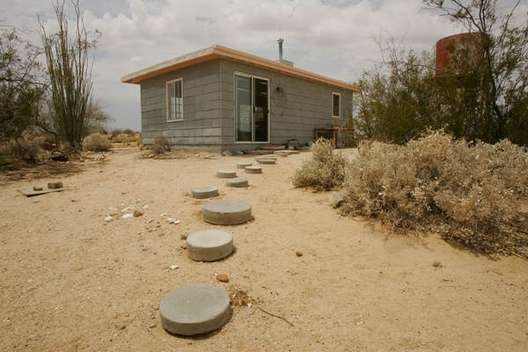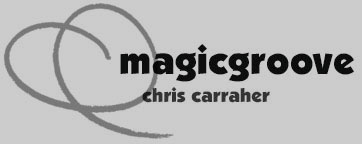about

who
Open to view…
Chris Carraher is a native of California, born and raised in a postwar working-class suburb of the eastern Los Angeles basin. Since 1992 she has been in the Mojave Desert and lives and works on a vintage homestead in Wonder Valley. The homestead cabins and the desert as both physical and metaphysical landscape have figured prominently in both her artwork and her activism. She co-directed the Wonder Valley Homestead Cabin Festival in 2008, a pivotal event in bringing the homesteads into community social, political, and aesthetic consciousness. After years of working in pastel she is now exploring her enduring interest in gesture and color through acrylic and collage.
why
Open to view…
The first words I chose for myself, my mother told me, were the names of the colors in the Crayola box (the BIG box). That intersection of color with language/meaning/mark ignited me, and those elements continue to drive my work: Color, calling us with the force and moods of a lover. Language as text as line, connecting points, dividing space, describing dimensions. And gesture, the action of the body asserting meaning with a mark.
Now at the other end of life, I find what matters is this: the aspiration, in all our awkwardness and misfortune, towards beauty, an emulation of that pitiless grace that enfolds us and of which we are made. I dream of making art that provides us with both solace and provocation, a recognition of the questioning heart and spirit of another.
Roots: Those same child’s eyes opened upon a postwar popular visual culture still influenced by the delicacy and joy of late Dufy and Matisse but energized by burgeoning Mid-century Modernism and Abstract Expressionism. Pacific Rim influences were strong in West Coast local culture, Asian and Latin and especially Mexican, as well as the Indigenous. But traces of Arts Nouveau and Deco and the Arts and Crafts movement still lingered in second-hand shops and family heirlooms, fabrics and décor, illustration and architecture. These were some of my roots, early influences that still resonate for me today.
upcoming events
April-May 2024: My Dead Girlfriend’s Art – 2
MDGA2 group exhibition curated by Francene Kaplan as a tribute to artist Barbara Austin. April 13-May 5, with reception at 5 pm on Saturday April 13. Sneak preview with experimental music Friday April 12 at 8 pm. At the Beatnik Lounge, 61597 29 Palms Hwy, Joshua Tree, CA 92252.
past exhibitions and projects
Open to view…
- January 2024: With Gesture and Color solo exhibition of acrylic and collage at 29 Palms Art Gallery, 29 Palms, California.
- April 2022: “Wonder Valley Dreamin'” group show curated by Joe Chaplain, 29 Palms Art Gallery, 29 Palms, California.
- November 2021: 9th Annual Joshua Tree National Park Juried Art Exhibition juried show, 29 Palms Art Gallery, 29 Palms, California.
- October 2021: Morongo Basin Cultural Arts Council Open Studio Art Tours, Magicgroove Studio, Wonder Valley, California.
- May 2018: WVCC Artist of the Month, Wonder Valley Community Center, Wonder Valley, California.
- October 2016: Morongo Basin Cultural Arts Council Open Studio Art Tours, Magicgroove Studio, Wonder Valley, California.
- October 2016: Additional Dimensions solo show, Magicgroove Studio, Wonder Valley, California.
- Sept 28, 2013: Presentation for “Jackrabbit Homestead” exhibition at Culver Center of the Arts, University of California, Riverside.
- 2011-2012: “still lIving/the secret garden” was part of E.G. Crichton’s Wandering Archives: Across the Pacific and the Nothing 2 Declare international exhibition, Vargas Museum, Manila.
- June 2009: “Fresh Meat in the Gallery VI: Defying Gravities” group show, San Francisco LGBT Community Center, San Francisco.
- May 22, 2009: Lecture at FARMLAB Salon series, with Kim Stringfellow/Jackrabbit Homestead. FARMLAB, Los Angeles.
- 2009: Recorded for audio tour of Kim Stringfellow’s “Jackrabbit Homestead: Tracing the Small Tract Act in the Southern California Landscape.”
- March 28, 2009: “Home: Finding Our Place“. Presentation, Kim Stringfellow’s Jackrabbit Homestead listening event. 29 Palms Historical Society Museum, 29 Palms, California.
- October 2008: Morongo Basin Cultural Arts Council Open Studio Art Tours at Tile House, Wonder Valley, California.
- May-July 2008: “Views of a New Desert, with Landscaping”, featured installation at Hi-Desert Nature Museum, Yucca Valley, California.
- April 2008: “Heartworks” group show, Ice Box Project Space, Philadelphia.
- March 2008: “Changing Landscapes”, dual show with Maxx Sizeler, a Fresh Meat in the Gallery Exhibition curated by Eddie Gesso. Femina Potens Gallery, San Francisco.
- 2008-2015: “Homestead Is Where the Art Is”, the blog of the Wonder Valley Homestead Cabin Festival, documenting the Festival and exploring the cultural role of the Small-Tract homestead.
- Feb-March 2008: “Homestead Obsession“, homestead-themed artwork of Chris Carraher, Robert Arnett, Perry Hoffman, and Scott Monteith. Fi-Lox-See/Wonder Valley Arts, Wonder Valley, California.
- 2008: Co-Director, Wonder Valley Homestead Cabin Festival. Wonder Valley, California.
- Nov 30, 2007: “Figuring the Desert: Object, Subject, and Tension
in the Mojave”. Presentation for the 2007 Fall Lecture Series of the
Morongo Basin Cultural Arts Council. Copper Mountain College, Joshua Tree, California. - October 2007: Morongo Basin Cultural Arts Council Open Studio Art Tours, Magicgroove Studio, Wonder Valley, California.
- June 2007: Fresh Meat in the Gallery IV: BORDERS, group show at ODC Theater Gallery, San Francisco.
- March 2007: The Plan: Claims of Territory in the High Desert. Solo show at 29 Palms Art Gallery, 29 Palms, California.
- October 2006: Morongo Basin Cultural Arts Council Open Studio Art Tours, Magicgroove Studio, Wonder Valley, California.
- Sept-Dec 2006: Love Full of Life solo show at Art Queen, Joshua Tree, California.
- June 2006: Fresh Meat in the Gallery Third Annual Transgender Visual Art Exhibition, group show at ODC Theater Gallery, San Francisco.
- October 2005: Morongo Basin Cultural Arts Council Open Studio Art Tours, Magicgroove Studio, Wonder Valley, California.
- 2005-2009: “Jackadandy” blog, the original running from 2005 to 2008, when, following terminal technical problems, it was archived. Follow-up blog Jackadandy in Exile was active 2008-09 and is still on view.
press
Open to view…
- Experiments in Living 1: How Minorities Conquered the Wild West – Someplace Magazine, 2015
- Experiments in Living 2: Reclaiming Old Homestead Cabins – Someplace Magazine, 2015
- Jackrabbit Homestead: Artists, Off-Roaders, and the American Dream Writ Miniature – KCET ArtBound, May 2012
- Don’t Fence Me In – The Desert Sun (PDF), August 2009
- Shed Reckoning: The Wonder Valley Homestead Cabin Festival captures the mystique of those historic huts that dot the High Desert – Dune Magazine (PDF), Feb/Mar 2008
- Homestead: Where the Heart Is – Hi-Desert Star (PDF), February 2008
- Praise for the Cabin – The Desert Trail (PDF), February 2008
Photo credit: Magicgroove Studio by Crystal Chatham/The Desert Sun
